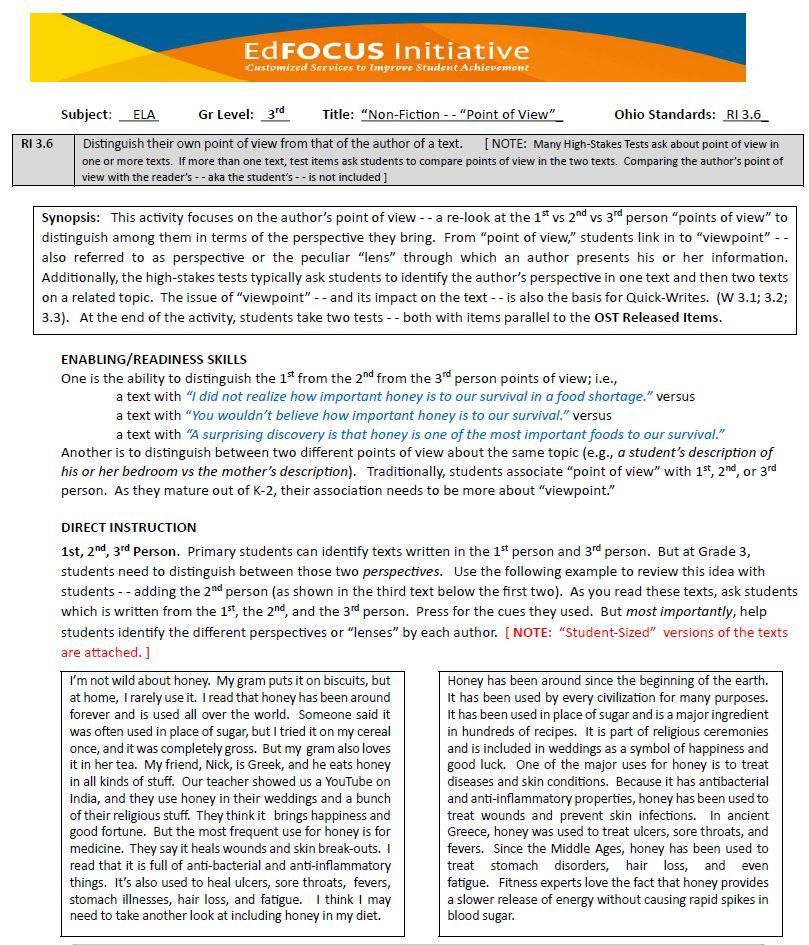Activity Description
Title: Non-Fiction - - “Point of View
This ACTIVITY has a set of teaching-learning strategies proven to increase student mastery of this critical Reading-Informational standard - - Point of View. Students identify the perspective or “lens” through which the author communicates his or her message and how thar perspective differs from the student’s own. On the high-stakes tests, students are usually asked to compare the points of view in two texts on a similar topic. [At Grades K-5, each Activity attaches student-sized texts, templates, and test items that teachers can quickly print and use immediately in class.]
Enabling Skills: (1) distinguish among 1 st , 2 nd , and 3 rd person point of view; and (2) contrast two or more different points of view (or perspectives) on the same topic.
Direct Instruction: Suggested teaching strategies are given that model for students what they need to do to begin their journey toward mastery. These strategies include identifying Non-Fiction texts written from the 1 st , 2 nd , and 3 rd person point of view (e.g., texts about Honey), what are the cue-words, and what are the differences in the information provided. Additionally, student discover “perspective” (an opinion or “lens” through which the author views the topic) by comparing multiple texts on the same topic - - each with a different perspective. Students also learn to “shift” from one “viewpoint” or “lens” to another.
Quick-Writes: Standards-based writing prompts are provided that require students to document that they have internalized the core ideas of the standard(s) and can show independent mastery. In this Activity, the Quick-Writes ask students to (a) identify which point of view - - 1 st , 2 nd , or 3 rd person - - they find most interesting; and (b) compare two “perspectives” on the same topic. NOTE: Mastery of this standard is excellent preparation for students to determine the objectivity vs bias of Internet and print articles.
High-Stakes Look-Alik Assessments: At Grades 3-8, the Activities include two tests - - one for practice - - followed by classroom analysis of errors made - - and the second test to determine mastery. The test items are constructed to look exactly like those items students will encounter on their High-Stakes Tests.
CUSTOMER: Thanks for considering this Activity as part of your approach to your state’s ELA standards. If you have any comments as to how it worked - - or didn’t! - - we’d welcome them! See the contact information to send us feedback. - - the EdFOCUS Team
This teaching activity comes with one hour of online instruction and guidance from a trained EdFOCUS professional. You will be contacted shortly after purchase with more details.
Product Page

